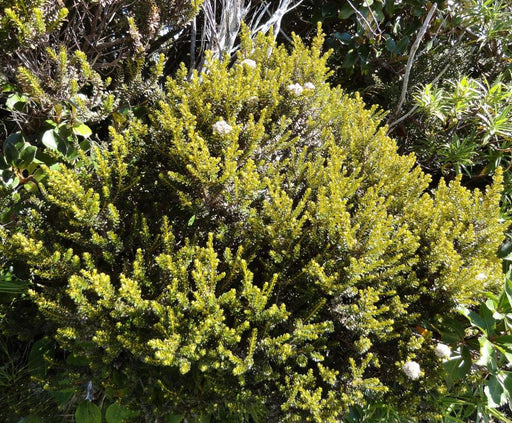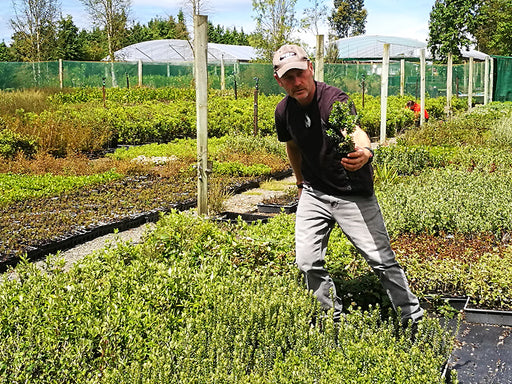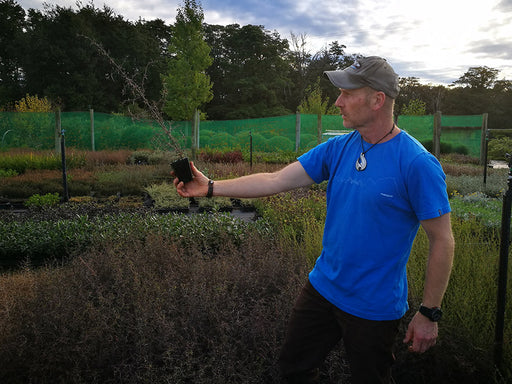Why Coastal Sites Matter — and Why Choose Natives
 Coastal sites — such as sandy dunes, beach edges, rocky cliffs, headlands or sea‑facing slopes — pose a unique combination of stresses: salt spray, strong and persistent winds, sandy or rocky, nutrient‑poor soils, and high sunlight or UV exposure. These conditions challenge many conventional garden plants, which often need shelter, rich soil, or regular watering.
Coastal sites — such as sandy dunes, beach edges, rocky cliffs, headlands or sea‑facing slopes — pose a unique combination of stresses: salt spray, strong and persistent winds, sandy or rocky, nutrient‑poor soils, and high sunlight or UV exposure. These conditions challenge many conventional garden plants, which often need shelter, rich soil, or regular watering.
Native New Zealand plants, however, evolved under similar coastal conditions. Many have salt-tolerant, leathery foliage, deep or fibrous root systems, and wind- and drought-resilience. This makes them ideal for stabilising soil (important on dunes or cliffs), resisting salt damage, and forming low‑maintenance, sustainable coastal gardens that support native insects, birds, and overall biodiversity.
Choosing What to Plant: Match Plants to the Coastal Site Type
Sand Dunes & Beach Edges

Challenges: shifting sand, salt spray, very well‑drained, low‑nutrient soil, wind exposure
Good native plant choices:
-
Coprosma acerosa — a hardy, sand‑binding shrub suited to stabilising dunes and tolerating salt spray and shifting sandy soil.

-
Juncus Edgariae — tough coastal grass for binding sand and stabilising loose, shifting soil at dunes or beach edges.
-
Phormium tenax (Harakeke / NZ flax) — salt- and wind-tolerant, with strong root structure, great for dune stabilization and coastal planting.

-
Coastal groundcovers such as Leptinella dioica — hardy, low‑growing mats that manage salt, sand, and sun, helping stabilise soil and resist erosion.

Rocky Coastal Cliffs & Exposed Clifftops
 Challenges: salt‑laden winds, poor or rocky soil, full sun, physical exposure
Challenges: salt‑laden winds, poor or rocky soil, full sun, physical exposure
Good native plant choices:
-
Ozothamnus leptophyllus — hardy shrub with tough foliage that resists salt spray and wind, well suited to anchoring in rocky soils on cliffs or headlands.

-
Olearia solandri — coastal shrub that handles wind, salt, and exposure; often used in coastal shelter plantings or cliff‑top gardens.

-
Coprosma repens & Coprosma robusta — dense, tough-leaved shrubs that cope well with salt spray and wind, suitable for coastal cliff edges or exposed gardens.

-
Griselinia littoralis — evergreen shrub or small tree with waxy leaves, useful for shelter belts or windbreaks on coastal, exposed sites.

Coastal Shrublands, Headlands & Shelter-Belt Plantings
 Challenges: salt, wind, poor soils, need for shelter, stability and resilience
Challenges: salt, wind, poor soils, need for shelter, stability and resilience
Good native plant choices:
-
Kunzea ericoides (Kānuka) — hardy shrub or small tree useful for forming shelter belts or shelter from coastal winds and salt air.

-
Leptospermum scoparium (Mānuka) — versatile shrub tolerant of coastal conditions, drought, and poor soils; also offers ecological value as a native flowering shrub.

-
Ozothamnus leptophyllus (Tauhinu) — valuable as part of wind‑ and salt‑resistant coastal shrubland or headland plantings.

Signature Coastal Native Plants
These species are proven performers across a wide range of coastal conditions and frequently used in coastal gardens or restoration plantings:
-
Phormium Cookianum — strong, wind‑ and salt‑tolerant, ideal for structure and dune stabilization.

-
Coprosma Roys Red— dense, salt‑resistant shrub excellent for shelter belts, hedging, or cliff‑top planting.

-
Olearia Haastii — coastal shrub useful for shelter, erosion control, and adding greenery where few plants survive.

-
Coprosma propinqua — a hardy, densely branched native shrub that performs exceptionally well in coastal environments. Its fine, twiggy structure and small, tough leaves allow it to withstand strong wind, salt spray, and poor, sandy or stony soils.

Practical Planting & Care Tips for Coastal Sites
-
Site Preparation & Soil Improvement

-
Coastal soils are often sandy or rocky and low in fertility. Loosen soil before planting and mix in a light amount of organic matter to help new plants establish. Avoid heavy compost or fine soil that might retain too much moisture.
-
For dune or loose-sand plantings, consider forming mounds or terraces to reduce erosion risk and give plants a stable base.
-
-
Mulching & Soil Stabilisation
-
Apply a light, coarse mulch (e.g., gravel, bark chips) to help conserve soil moisture, reduce salt splash onto stems, and stabilise sand or loose soil.
-
In shifting-sand areas, use sand-binding grasses or sedges first to help anchor soil before introducing larger shrubs.
-
-
Planting Time
-
For best establishment, plant in autumn or early spring — these seasons often bring milder weather and more consistent moisture, giving roots time to set before harsh summer salt winds or winter storms.
-
Avoid planting in the height of summer or during windy, salt-spray conditions when young plants are most vulnerable.
-
-
Watering & Establishment Care
-
Supplement water during the first 1–2 seasons, especially in sandy, fast-draining coastal soil. Once established, many coastal natives require minimal watering — their deep or fibrous root systems handle salt, wind, and dryness.
-
Shelter young plants from strong winds or salt spray with temporary windbreaks or nurse plants until they are well rooted.
-
-
Shelter Belts, Windbreaks & Layering
-
Use dense, hardy shrubs (e.g., Coprosma, Ozothamnus, Kunzea) to form shelter belts or protective hedges — these reduce wind speed, salt spray, and help more delicate plants behind them survive.
-
Combine grasses/groundcovers, shrubs, and taller structural species to create layered planting — stabilising soil at all levels and increasing resilience to coastal conditions.
-
-
Long-Term Benefits & Maintenance
-
Once established, coastal natives are typically low maintenance, tolerate salt, wind, drought, and poor soils, and rarely require supplemental fertiliser or frequent watering.
-
They help stabilise dunes, cliffs, and coastal slopes, reducing erosion risk and supporting landscape resilience.
-
Coastal native plantings support local wildlife — native birds, insects, and other fauna — and help maintain ecological integrity of coastal zones.
-
Planning Your Coastal Garden (Anywhere in NZ)

-
Survey your site carefully — note salt exposure, prevailing wind direction, soil type, drainage, slope, and exposure to sun and spray.
-
Divide the site into zones — e.g., dune/beach-edge, cliff/rocky zone, shrubland/headland zone, sheltered garden behind windbreak — and choose plant species accordingly.
-
Select a balanced mix of plant types — combine sand-binding grasses or sedges, wind- and salt-tolerant shrubs, structural plants like flax, and shelter-belt shrubs for layered resilience.
-
Prepare soil appropriately — loosen, lightly enrich if needed, and mulch to conserve moisture and reduce salt splash.
-
Plant at optimal time — autumn or early spring for best root establishment before harsh seasons.
-
Care during establishment — water young plants, protect from wind and salt, mulch and monitor growth until plants are stable.
-
Allow natural structure to build over time — once mature, coastal native plantings become resilient ecosystems requiring minimal maintenance, benefiting both landscape and wildlife.













